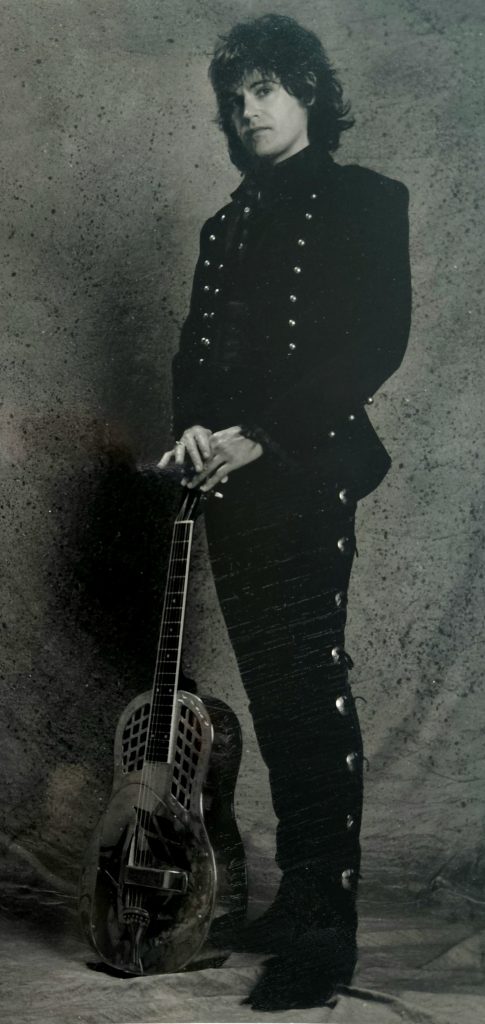
The first time I can remember hearing a National guitar was when Keith Richards played one on the Rolling Stones’ version of “You’ve got to Move,” back in 1971. Then came Rory Gallagher’s take on “As the Crow Flies.” By then, I’d been playing guitar (seriously) for about a year (although I had been fooling around with it since I was 12.) After seeing Rory at the Colonial Tavern in Toronto the year before, I was still struggling, learning how to play slide guitar, though no-one in Ottawa that I knew of played slide, and back in 1973-’74 there was no such thing as a “slide tutorial” on YouTube. After watching Rory closely in Toronto, I just assumed he was playing in standard tuning. Didn’t everyone?
I had only four guitars then—a Yamaha acoustic, a 1960 Telecaster,a ’66 Telecaster and a ’66 Strat. After hearing Rory’s “As the Crow Flies,” I decided I had to get a resonator guitar. I went to one of our local music stores, ‘Sam’s ABC Music’ in Ottawa’s Byward Market to look at the guitars. The Market was a cool place back in the ’70s—lots of character! William Street (where Sam’s was) had three pawnshops side by side, with the St Nicholas symbol—three gold balls—hanging above their storefronts. Sam was a crusty guy—we were a bit scared of him! When I’d gone to ‘Sam’s’ before, to buy a capo for the first time, he wrapped the elastic capo tightly around my finger (it was cutting off my circulation!) and said “make sure you take it off your guitar when you’re finished with it!” Sam had a shiny new, metal Dobro with Hawaiian scenes engraved into the body. It sure looked nice, but somehow, it just didn’t have the same sound that I’d heard on my records.
I figured that George Diamesis, a local guitar wheeler-and-dealer and player (still around!), might have a lead on a National guitar. So I called him and sure enough, he told me he had one. He brought the guitar by our little row-house on Eastbourne in Manor Park, a hippie crash-pad I shared with my sister and two brothers.
The National that George brought over was a wooden-bodied “Rosita” with gorgeous, gothic sound-holes in the upper bouts. I didn’t know anything about Nationals then, but years later, I read Bob Brozman’s great book about Nationals and discovered that my Rosita was a late 30’s model. It had been refinished in black, and one of the previous owners had installed an old DeArmond pickup near the neck (I removed the pickup right away.) I bought the Rosita for $120 and was thrilled to finally get the old National sound that I’d wanted!
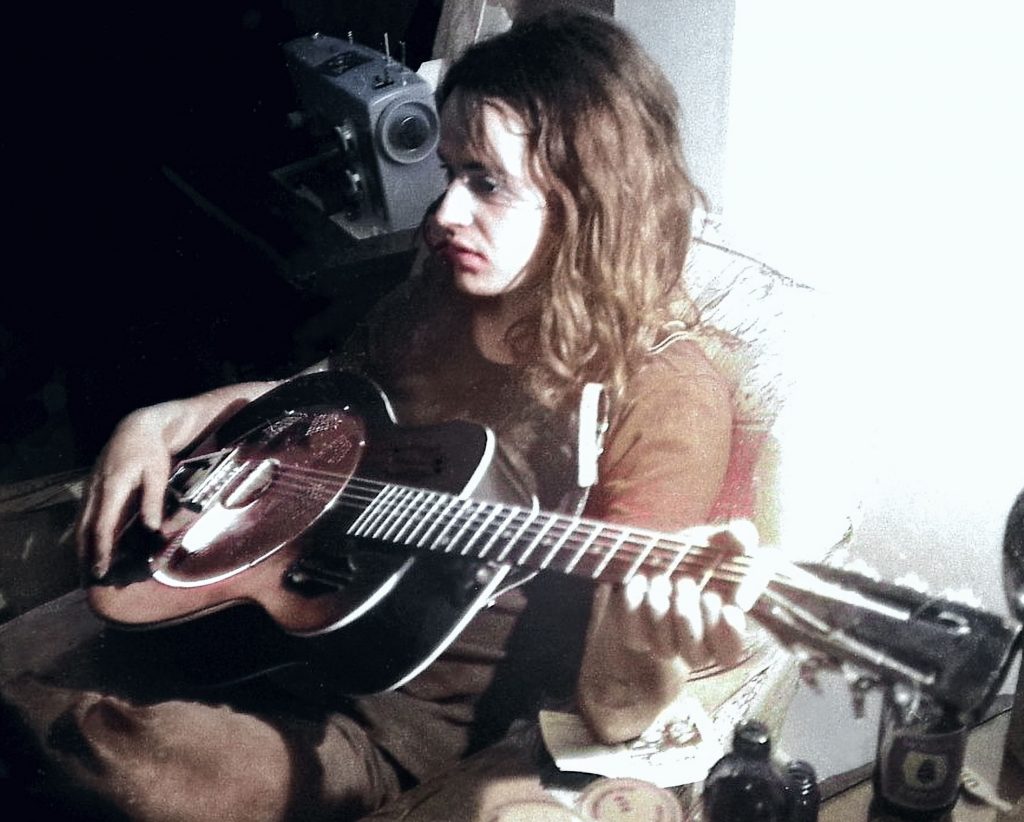
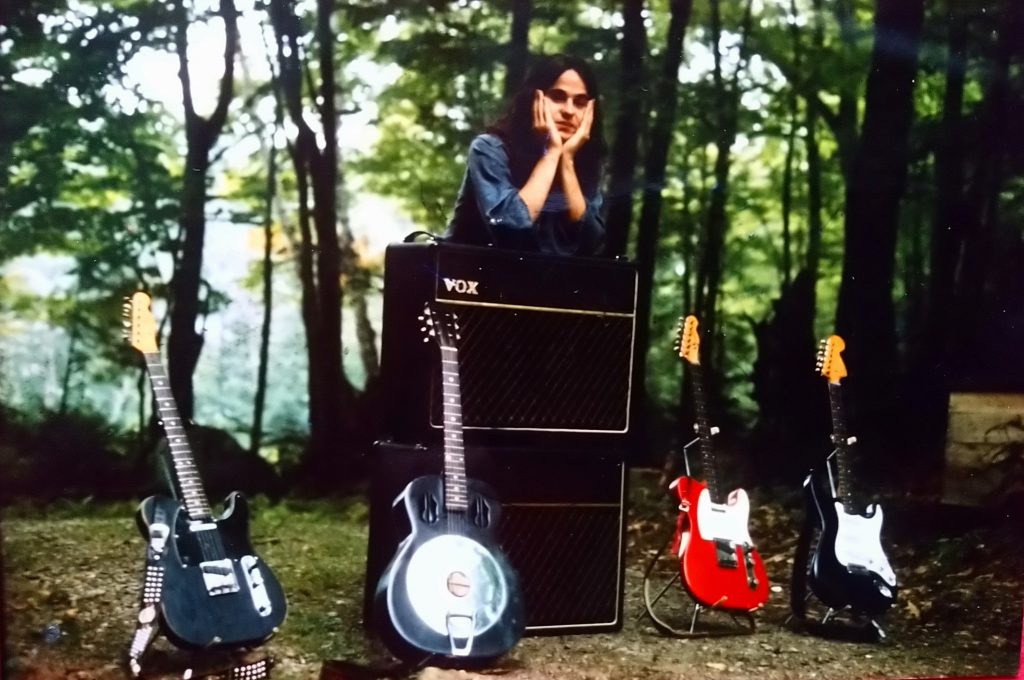
I had discovered open tunings a couple of months earlier, when I finally found a book on learning slide guitar—in the book, it mentioned that some guitarists used open tuning for slide playing. The book explained how to tune a guitar to open E and open G/A. Back then, my brothers and our friends jammed in an old metal garage [insert Rosita garage cropped] at our place up in the backwoods of Quebec. I tuned my old Tele to open E and walked up to the garage, plugged into my Marshall half-stack and ran my slide up to the 12 fret (like Elmore James.) Instantly, my brother John burst into the garage and yelled “What did you do??? You’ve GOT IT !!!” It was that quick. After trying to get my slide playing down for a couple of years, discovering open tunings changed my whole style and made me 10 times better instantly! Later, I learned open G tuning and loved it—especially for playing (my hero) Keith Richards’ rhythm parts. Open G was also great for slide, like Rory Gallagher’s “I Could’ve Had Religion.” I taught myself a bastard version of “As the Crow Flies”—Rory played it in open D, but somehow my version morphed the song into open G.
I really regret not learning with fingerpicks, ’cause all the old delta slide players used them, either that or their fingers—never flat picks. It’s only now, 50 years later, that I can (kind of) play with fingerpicks. The gang of friends I played guitar with, always used flat picks. I used Herco flex 75s [insert hero flex 75 photo] religiously, just like my heroes Rory G., Dave Gilmour, Jimmy Page, and the guys from Status Quo, Rick Parfitt and Francis Rossi. At first, I mostly banged away on my Rosita, playing my never ending version of “As The Crow Flies,” which really helped me learn how to play that style. Years later, I played Rory G. my version of his song. I asked him, shyly, after I played it “Do I have it down?” And he told me (very sweetly) that I did have it down. That sure made me feel good!
I played my Rosita for years. Then late one night, as I was walking home on Bronson Avenue in downtown Ottawa, I passed the Ottawa Folklore Center just north of Carling. It was late and very dark, but as I walked by the music store, I saw an old, tarnished metal guitar hanging in the front window. Was that a National? The next day, I walked back to the store and asked the salesman if I could see the guitar. It was a National! I played it and heard that beautiful, loud metallic sound that I couldn’t quite get from my wooden bodied Rosita. I only had $25 to my name, but I put it down as a deposit, on the stipulation that it had to be paid in full within 30 days. (That metal National was priced at $400. Now it would be closer to $4000!)
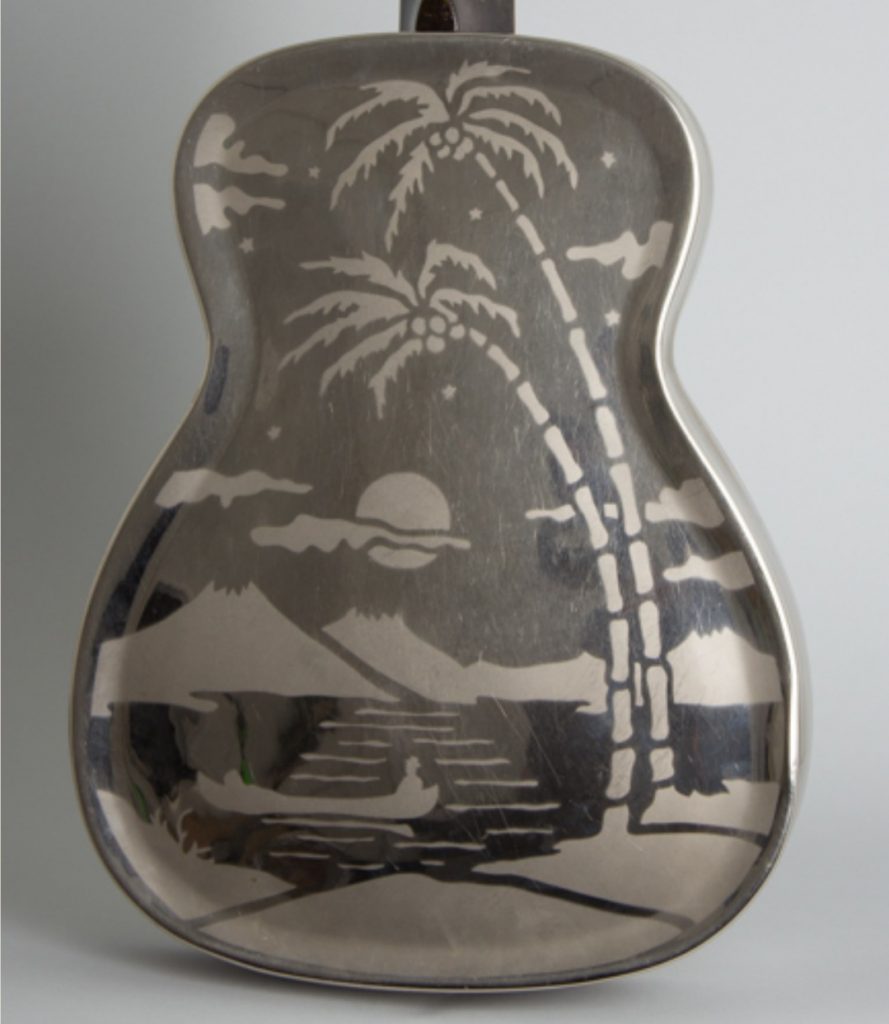
Within a month, I’d scrounged enough money together to pay off the National. At the Folklore Centre, I asked the salesman if he thought it would be safe to polish the guitar (it looked like an old 1920’s silver dime, all tarnished.) He told me to be careful, and not use anything aggressive on the nickel plating. When I got home, I got out a can of “Silvo” and started polishing. As I rubbed the guitar, I started to see palm trees and stars [insert o style back photo] on its old metal body—a Hawaiian lagoon with a boat appeared—it was like rubbing Aladdin’s lamp! I had bought the guitar thinking it was just a plain, unadorned instrument, but it was covered in beautiful art deco etchings.
I was soon entertaining anyone who would listen with my “new” (1930) National “Style O.” When my band, The Action, would do gigs, I’d sometimes bring out the Style O and we would play our version of “You’ve got to Move.” People were blown away when they saw the shiny, silver guitar in the stage lights! Most people in that era had never seen or heard a guitar like that. It’s such a loud guitar—I’m not sure if I’ve ever heard an acoustic instrument as loud. For years, I carried my guitar around in an old blanket—I couldn’t afford to buy a case. In the ’1980’s my band “Number 1” featured an unplugged set. I always played my Style O National, and people really liked the earthy vibe of the music. I told myself that when I got old, I would play my National in some funky, blues bar somewhere, and just play delta blues all night. My National saw a lot of use for the next few decades. It was thrilling to see Rory Gallagher play my guitar, as well as the blues legend, slide guitarist, Johnny Little john!
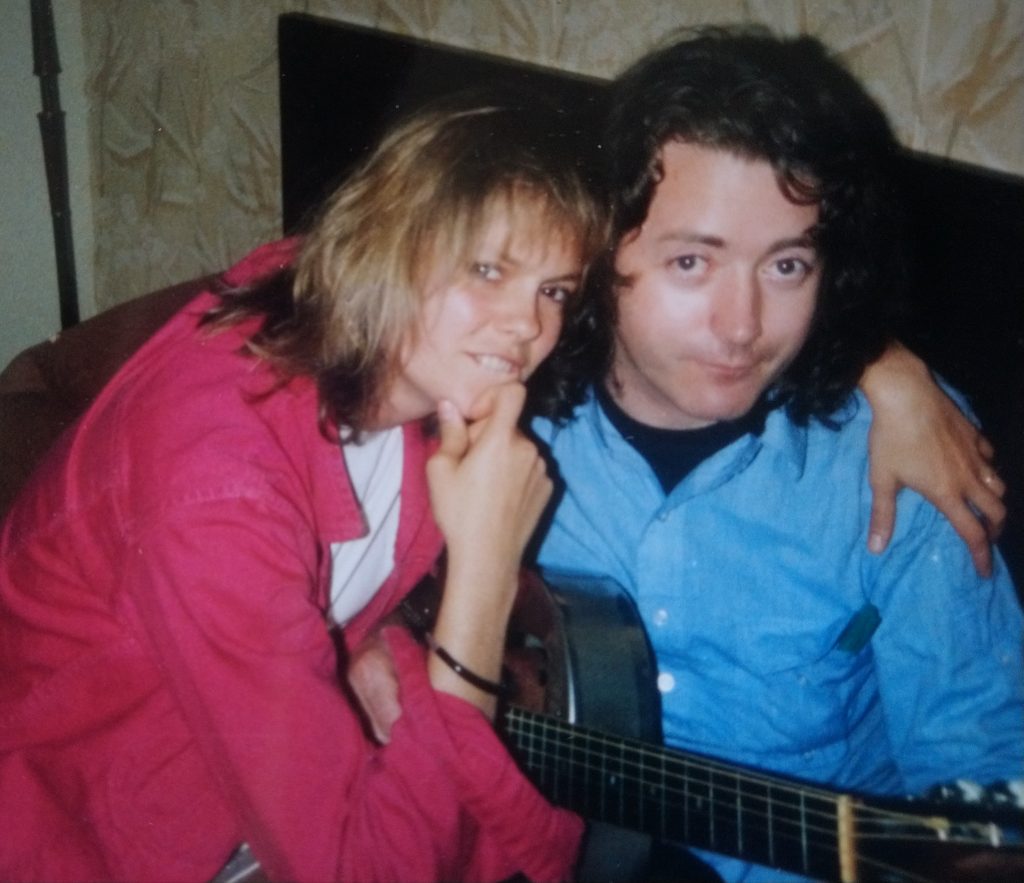
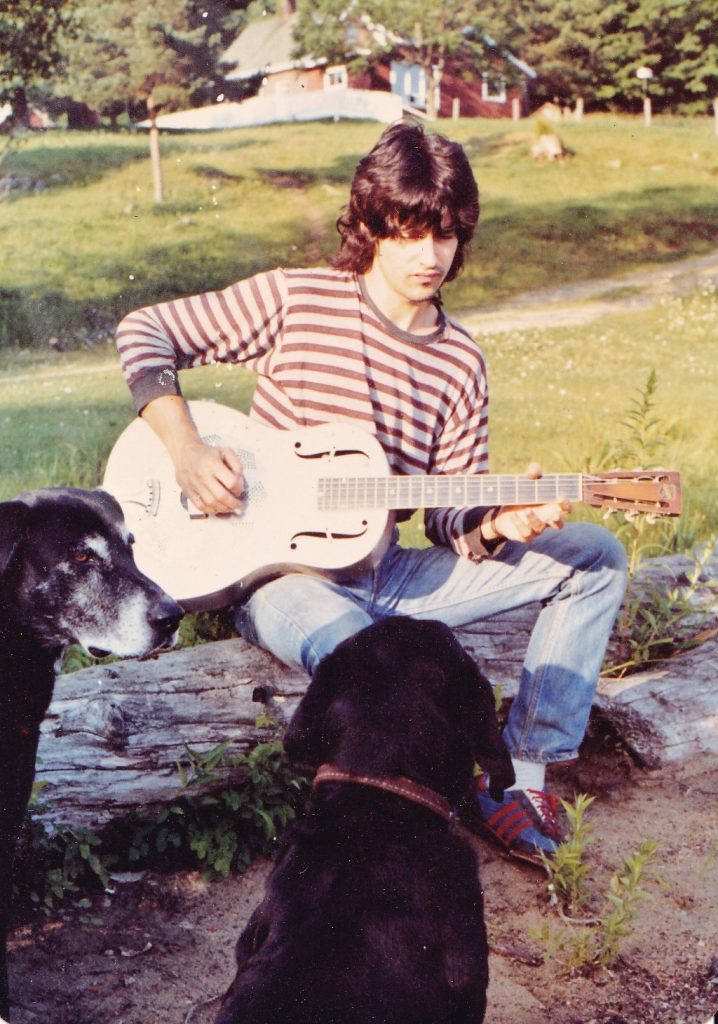
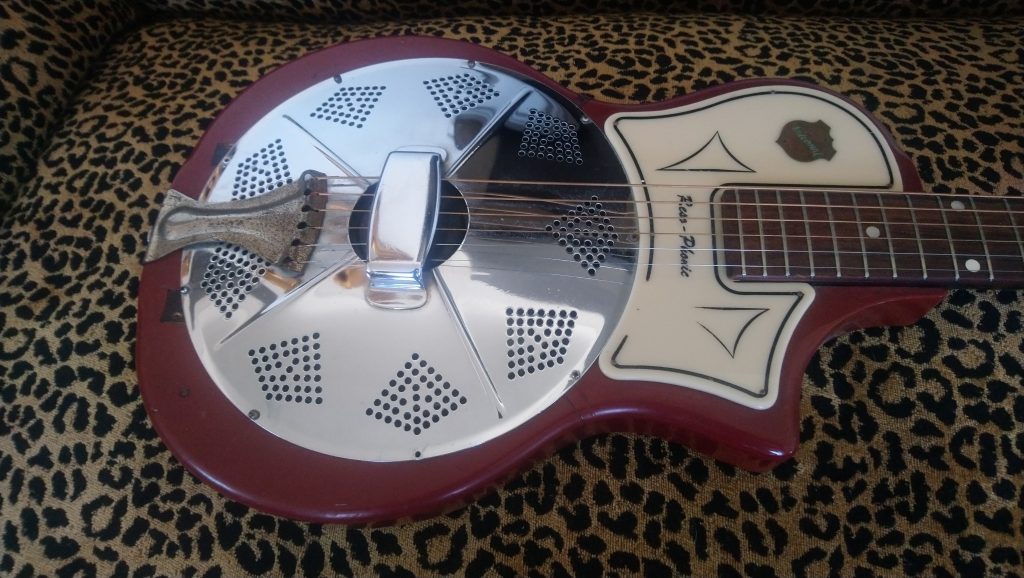
My next two Nationals were Res-O-Glas “Folkstar” guitars (again Valco-made.) They were cool looking instruments and they matched my other electric Reso-O-Glas “J.B. Hutto” guitars.
In the early 1980’s, my band did a tour of the eastern States. I found a National Reso-Phonic guitar at George Gruhn’s Guitar shop in Nashville and had it shipped ahead to where we’d be staying in Connecticut. The guitar was a small National Valco model with a regular sized resonator and a “mother of toilet-seat” finish. It was a sweet little guitar, a perfect sized travel guitar, and it had that National sound—lots of reverb! When we did a show later,(1982) in Montreal (at The Spectrum) with Rory G., I showed him the guitar—he was surprised at how loud it was! I’ve owned two of them and they are nice—… but I do prefer the guitars from the 1920’s and ’30’s for their bigger sound.
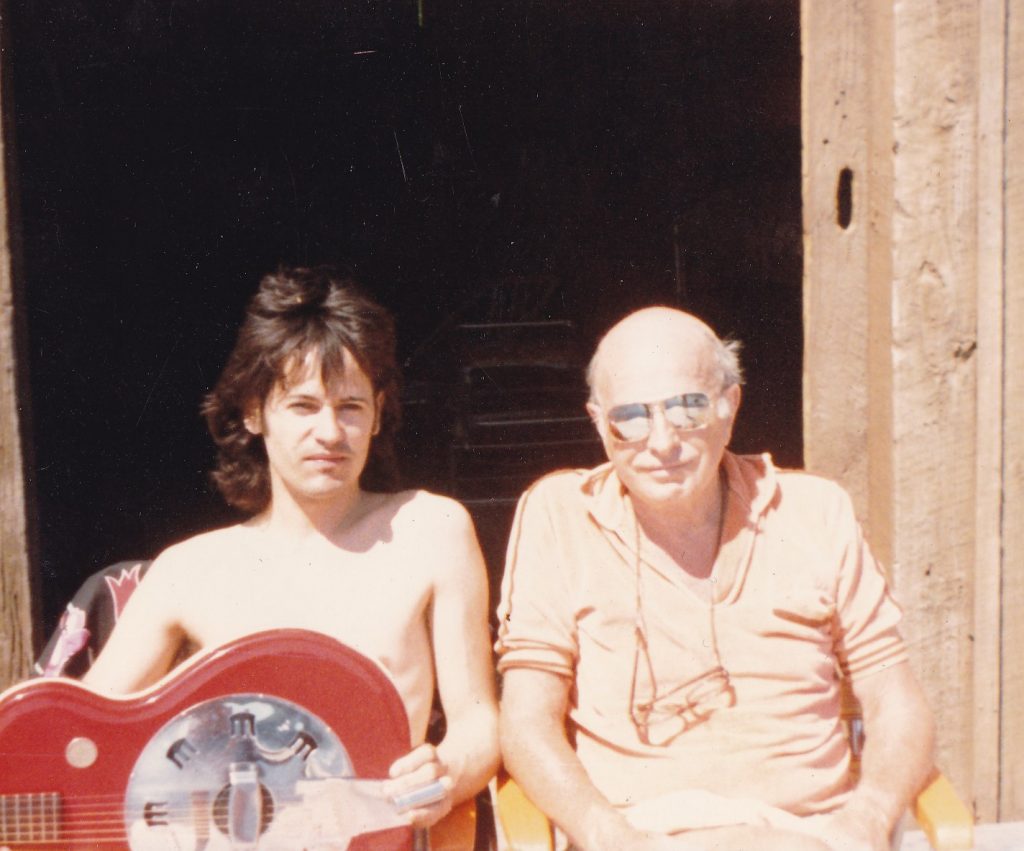

While visiting NYC in ’85, I took a walk down to Yazoo Records on Waverly Place in the Village and bought as many of the Yazoo Blues Collection LPs as i could afford. (I’d heard that “Keef” had the whole collection so hey, why not copy him?) Back home, I listened to those albums—Blind Willie Mctell, Tampa Red, Blind Willie Johnson, Blind Boy Fuller … wow! That was a real musical education for me and many of the artists played National guitars.
We played a show with Johnny Winter, and afterward, his road manager approached me as we left the stage, and told me Johnny wanted to meet “the guy with the red guitar.” (I’d been playing my red J.B. Hutto electric). I walked into Johnny’s dressing room with my red Folkstar and Johnny and I sat down and passed the guitar back and forth, both taking turns playing it. I had to laugh when Johnny asked me if he could use my slide (a 11/16th Sears Craftsman wrench socket.) It was heavy! Johnny put the slide on his (long ,skinny, pinky finger and said “goddamn that’s too heavy!” He reached in his kit bag and pulled out what looked like an old lady’s cloth change-purse. Inside the purse was Johnny’s precious slide that he’d had since the 60’s. It was all tarnished and very light. Johnny advised me to use the slide on my pinky finger, but it was too late for me to change (I’d copied Duane Allman and Rory G. years ago, and used it on my ring-finger.) Johnny and I hung out (alone) in the dressing room. I looked at him and thought how handsome and cool he looked. He was very shy and sweet, and when I got up to leave, he stood up and looked at me with his eyes twinkling, and told me “You’ve got all your licks down. It’s going to be tough, but don’t give up!” Later, every time I’d feel discouraged, I’d think about what Johnny said to me. It did give me the confidence to keep going!
Ever since I’d seen a photo of Elvin Bishop playing an old National Tricone (in my slide instruction book) I’d wanted one. (When I eventually met Elvin backstage (in 1986) I asked him about his Tricone—he told me he’d passed his on to Greg Allman.) Well.. I may have wanted a Tricone, but good luck finding one, especially in Ottawa! I called George Gruhn (in Nashville) and asked him if he could track one down for me? Gruhn told me they were very hard to find, especially the round-necked “Spanish” models (most of the old 20’s and 30’s Tricones were lap-style guitars — you couldn’t play them the conventional way.) Gruhn put me on a waiting list and told me he’d let me know by mail if he ever found one. Months went by, then one day a letter from Gruhn arrived—he had found a National Tricone. It was a 1929 “Style 2” model with beautiful Art Nouveau roses etched in its body, When my wife came home that day, I told her .. “I’ve got good news and I’ve got bad news. The good news is that I’ve found a Tricone—the bad news is, we’re going to have to get a bank loan to buy it” !My poor wife burst into tears—we were as poor as church mice, but bless her heart , we went to our bank the next day, and took out a loan for the guitar. I could hardly wait for the guitar to arrive from Nashville (there was no parcel-tracking back then!) Weeks went by, but no guitar. Then one morning (it was my 32nd birthday) I heard a knock at our front door. There was the UPS man carrying a big shipping box—my guitar—and on my birthday no less! I carried the box into the kitchen and laid it on the table. I left it there, finished my cup of tea, then I took our Bloodhound [ insert obie photo] out for his morning walk, all the time savouring the moment I’d finally see my precious Tricone! When I returned home, I opened the shipping box, and there was my National. It looked beautiful—a work of art! At first, I was surprised that it wasn’t as loud as my single resonator guitars, but I soon grew to appreciate it’s more ‘refined’ sound. And after listening to some Tampa Red records, I found I could (almost) nail his sound with my Tricone.
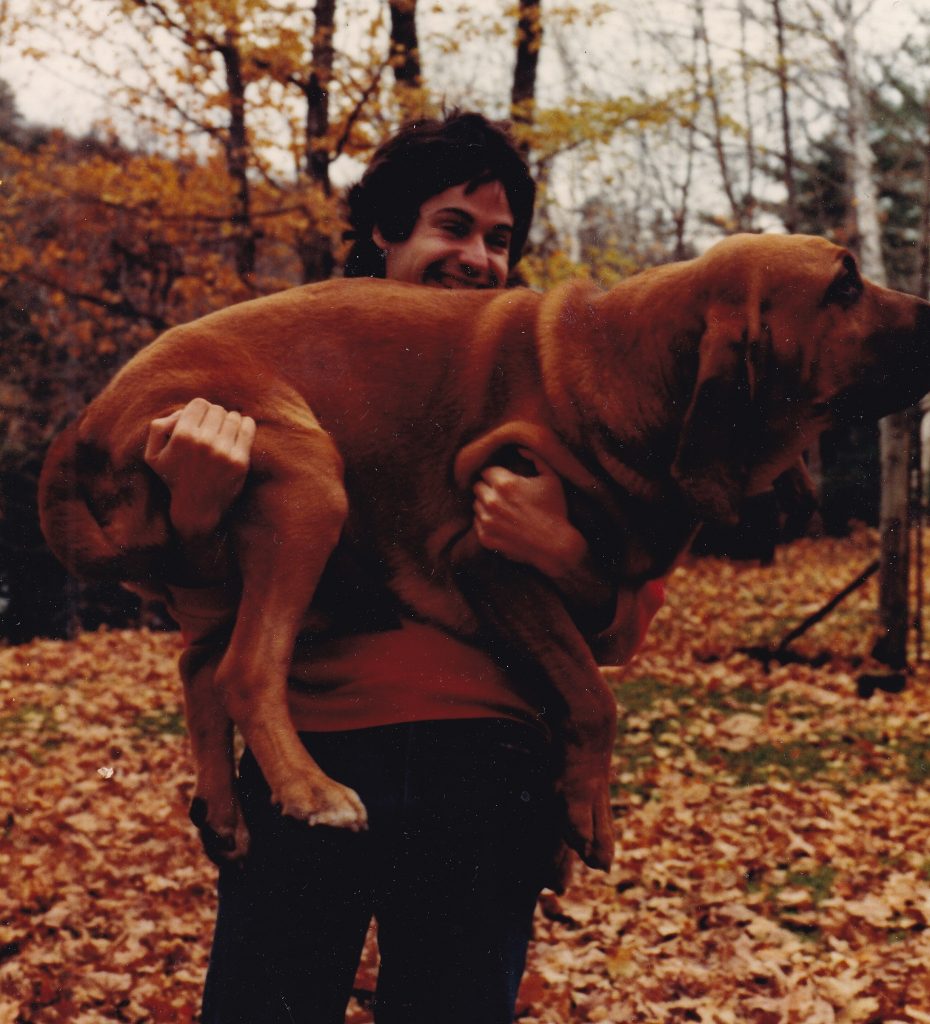
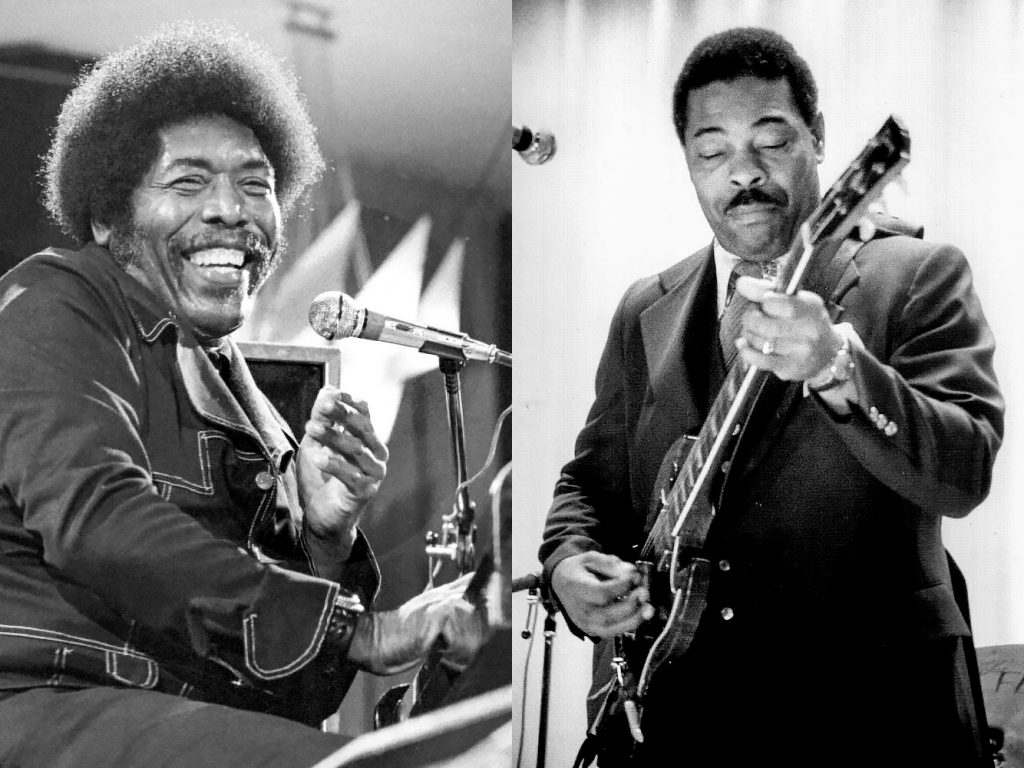
My friend, Tony Mclean worked at our local University’s radio station (CKCU.) One day ,Tony asked me if I wanted to go with him to interview two legendary Chicago blues musicians—Johnny Littlejohn and Big Moose Walker. I was right up for it, and we drove downtown to the Beacon Arms Hotel (where the blues musicians were staying) on Albert Street. (The Beacon Arms was the same hotel that Elvis stayed at ,when the hotel first opened in 1957, and it’s also where Rory stayed when we hung out in his room all night in ’85.) Tony and I walked down the dingy, somewhat run-down hotel hallway. It was mid afternoon but the narrow upstairs hallways in the old hotel were dark.
We knocked at the hotel room door. It opened a crack and a stocky, well built, black man wearing underpants (and nothing else) looked at us. He wasn’t exactly friendly. Tony told him we were there to interview Big Moose and Johnny Littlejohn. The man (who turned out to be Littlejohn) let us into the room. Things were awkward at first, and nobody spoke much—Johnny and Big Moose answered our questions in monosyllables.
We weren’t getting anywhere with the interview. Then I remembered that I had a chunk of black hash in my pocket. I wondered if smoking some might break the ice a bit. But these guys were ‘old’ and they looked tough. What if they called the cops? (Cannabis was still very illegal at the time.) I mustered up my courage and quietly asked them… “Do you want to smoke some hash?” Big Moose stood up in a flash and yelled “YOU Saved our Lives !!!” Big Moose and Johnny were new in town and still hadn’t scored any herb. Big Moose went to their mini-fridge and brought out ONE beer (which was all they had!) He poured the beer into four glasses and we drank it. I handed Big Moose the chunk of black hash and he started to roll a joint. Bef ore I knew it, he had put half of my big chunk into the joint. I had to take the hash away from him or he would’ve rolled it all up. After we smoked the joint, the atmosphere changed completely—we were old friends now! I opened my two guitar cases I had brought along. I showed Johnny and Big Moose my National O style and my Style 2 Tricone. To my knowledge, they had never seen a National before (or if they had, it had been decades since they’s seen one). I handed Johnny the’ O style’ and he sat on a stool and played it. (with the guitar covering his underpants he looked like he didn’t have any clothes on! ) He giggled quietly to himself as he played the National, like a kid with a new toy. God, I wish we had brought a camera—the photos would’ve been priceless! Johnny played both Nationals-it sounded fantastic! He told me that he liked the (louder) O style best.
Later, I played them my new band’s recording on a cassette deck. It was called “Way Down in Georgia.” Big Moose said “That’s gonna be a hit.”—sadly it wasn’t… We finally left their hotel room around 5pm. On our way out of the room, Littlejohn told us “You’re welcome in Johnny Littlejohn’s room anytime!” That night, we went to The Rainbow Bistro in the Byward Market and caught Johnny’s and Big Moose’s show—it was excellent! I was fascinated to see that Johnny (his SG tuned to open E) played in a small “box” between the 10th and 12th frets. (like Duane Allman)..his slide playing never got boring or repetitive. It was only years later that I realized we’d spent the afternoon with two real blues legends! I read about both of them later—Big Moose played with Elmore James, Muddy Waters, Sonny Boy Williamson (#2) and more. Johnny Littlejohn rehearsed the Jackson 5 when they were getting started and had a fantastic solo career.
As the years (and decades) rolled by, I continued my love affair with my Nationals. When National Reso-Phonics started building new Nationals I bought a couple of Tricones—they were great guitars. I became quite friendly with the company and I found the staff very nice and pleasant. I also talked with Bob Brozman on several occasions and he always gave me great advice if I asked him about an old National I was planning to buy.
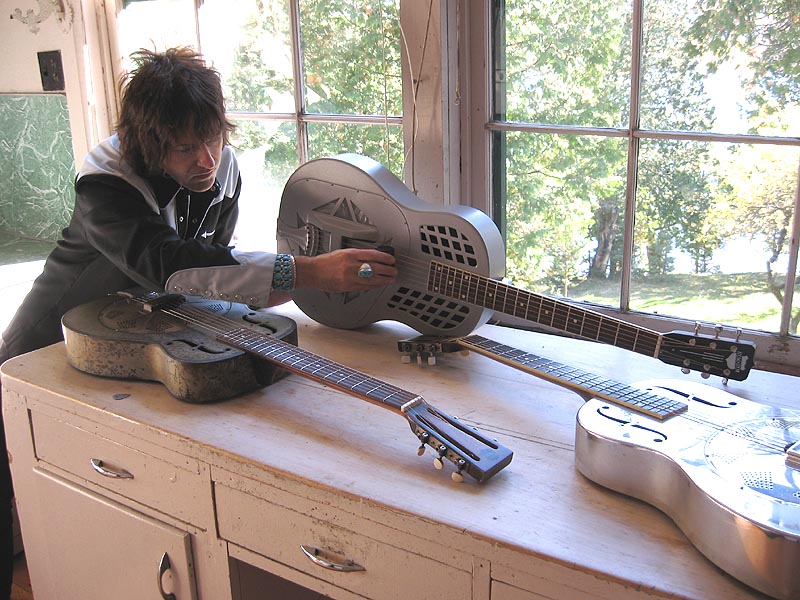
His great book “The History and Artistry of National Resonator Instruments” was just fantastic, and after all the time I’d played Nationals, I could finally date my guitars and know their model names and history. I slowly acquired some nice, old Nationals through the years … Two Style 1 Tricones (both from 1928, the same year as Tampa Red’s! ), a 1930 “Triolian” exactly like Rory’s, a ’34 “Duolian,”[insert duolian photo] and a 1940 “Collegian.”
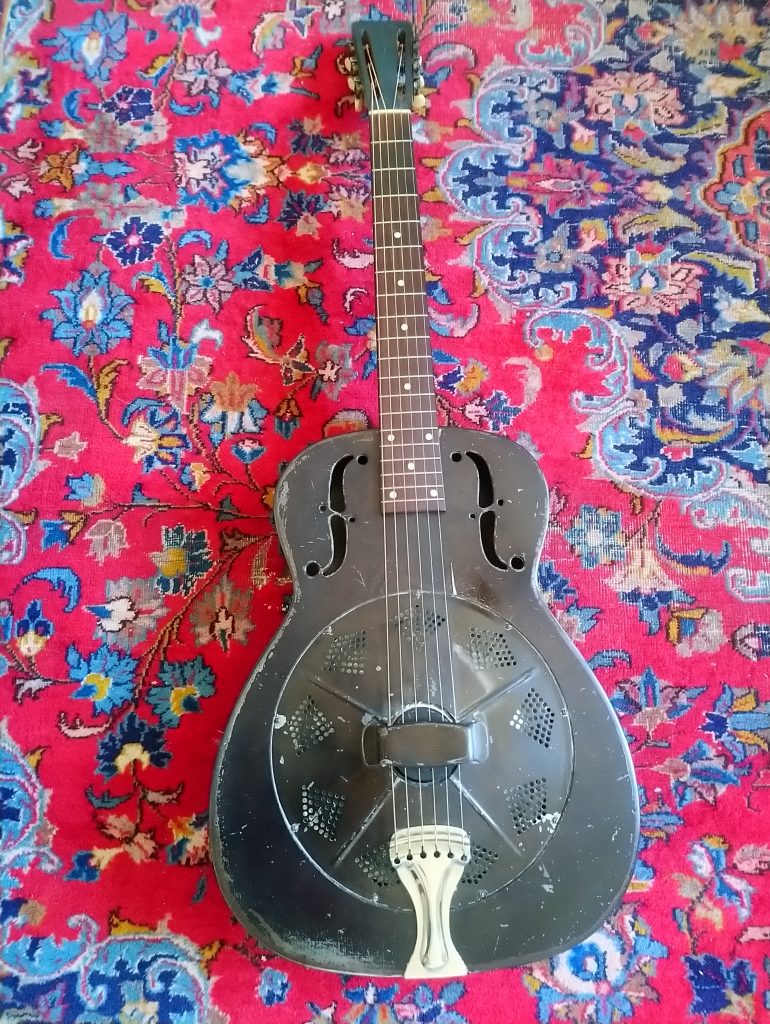
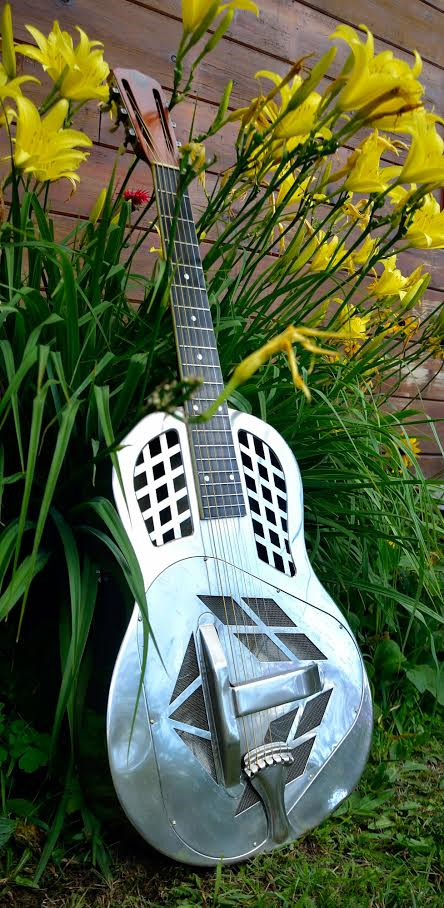
I picked the guitar up in NYC a short time afterward. When I opened the box at the Fedex station, I was taken aback to see that the precious old guitar had been packed in a soft-shelled cardboard case. It was a miracle that it survived the long road trip from Bakersfield. That night, I played the Tricone (with new strings—it had electric strings when it arrived.) My friends and I jammed into the night in a funky old apartment on Henry Street in the lower east side, the old haunt of William Burroughs & Co.
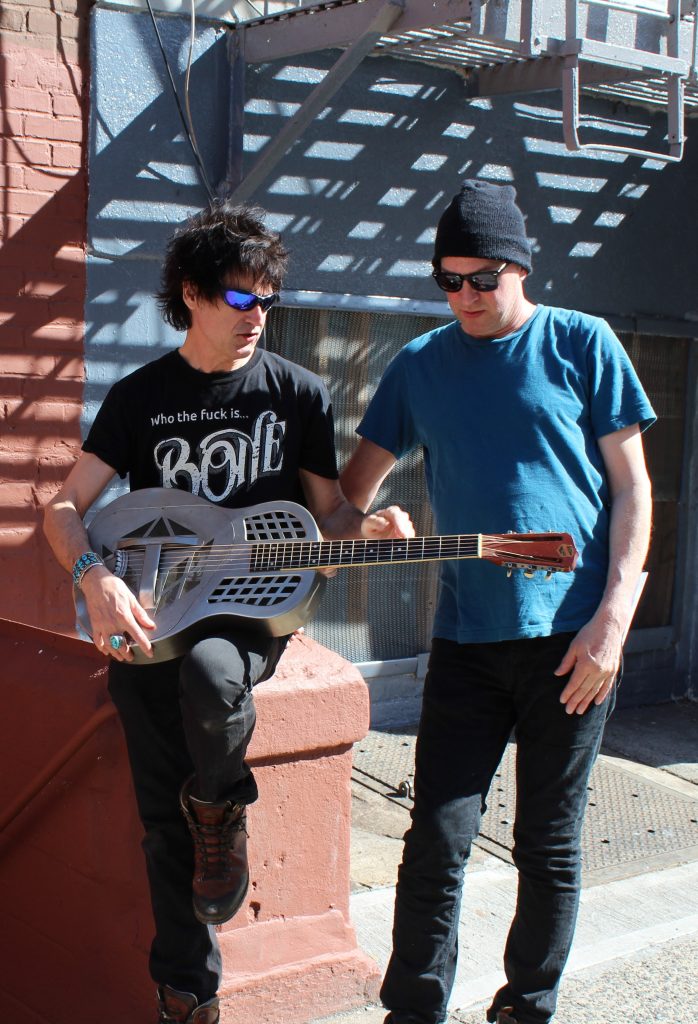
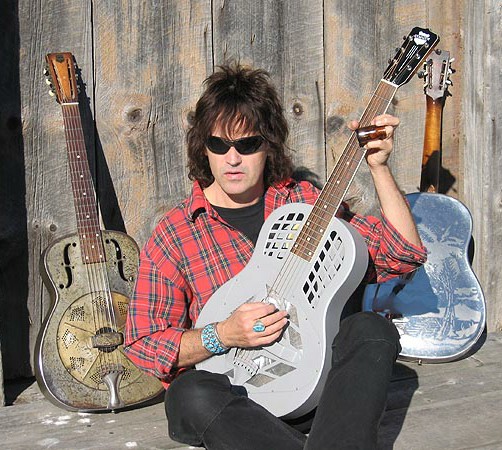
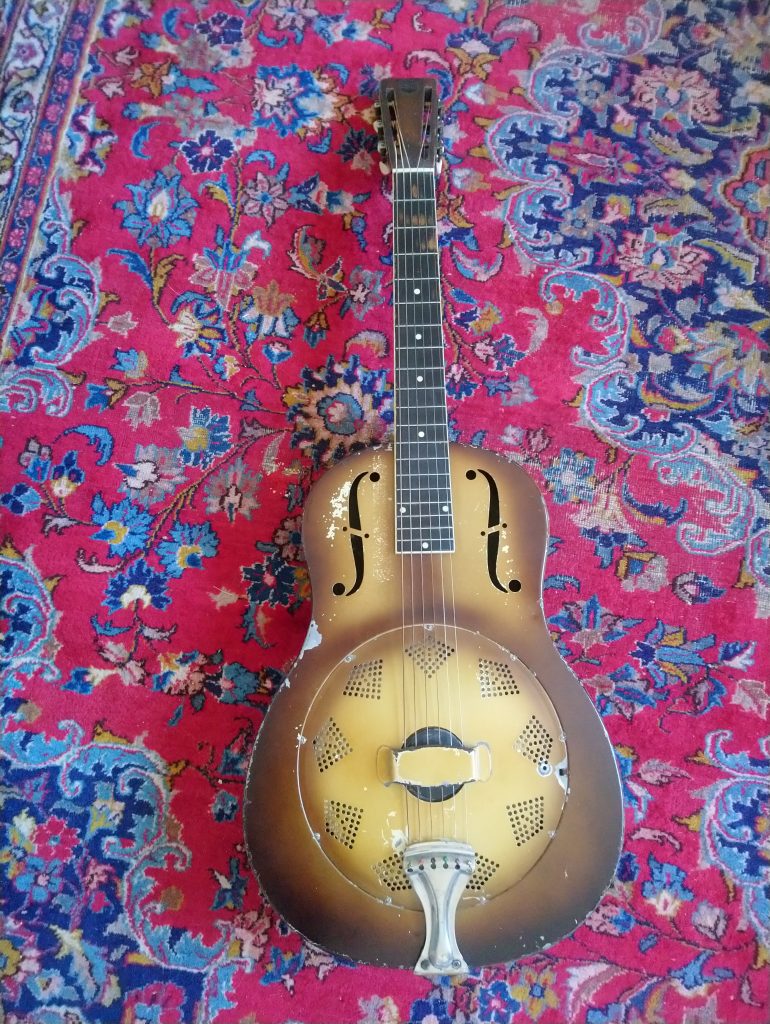
I found one of my 1928 Tricones on Ebay. I looked as the auction ended, and there were no bidders (a previous owner had tried to shave the neck of the guitar and went too far—the metal reinforcing rod was visible on the back of the neck.) Everyone I asked, told me NOT to buy it … but I finally did ,after speaking to the seller. He told me that the guitar had belonged to a very famous C&W musician in Bakersfield, California (Buck Owens?) The seller asked me if I knew a “crazy guy” called Jack White. Apparently, Jack had been trying to ‘acquire’ the Tricone too, but I beat him to it—sorry Jack!
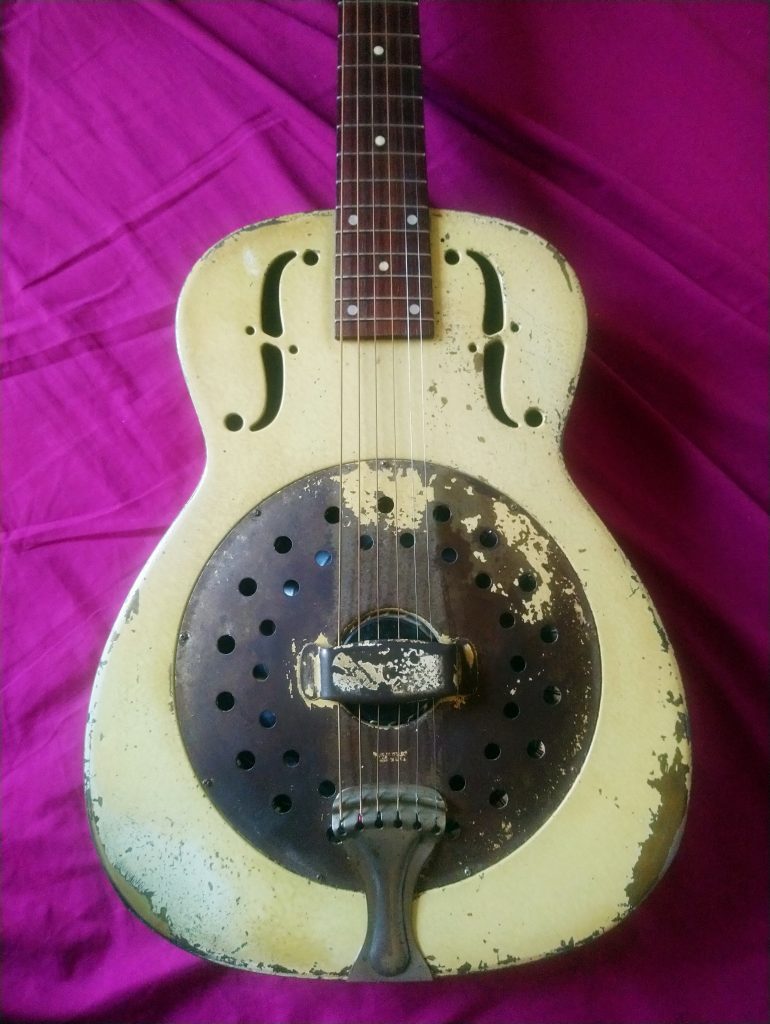
A few years ago, “Uncle Bob” (local drummer, and family friend.. also owner of “Fab Gear” clothes on Wellington) and I drove to Rochester to hang out and jam with Gene Cornish (the Young Rascals.) Gene’s band included John Lennon’s NYC bass player, Gary van Scyoc. Being a Beatles fanatic since the age of ten, I was thrilled to meet Gary! I asked him about one of the songs that Gary had recorded with Lennon, “John Sinclair.” I knew that Lennon had played a National Tricone on the song. Gary told me that Lennon had asked his roadies to go to W. 48th St. (where Manny’s Music store was ,and other famous music stores were) (in NYC) and find him a National guitar to use on the song. The roadies returned with an old Style 1 Tricone!
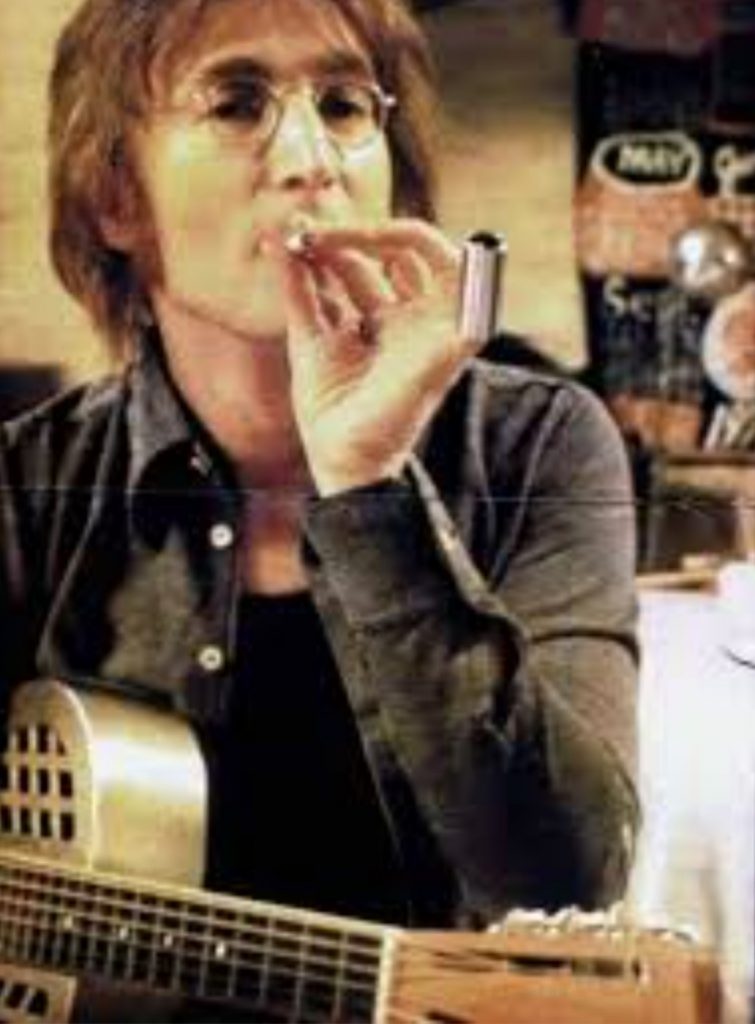
John Lennon and his National Tricone
Gary also told me that he and Lennon recorded the song in one take. When the song was released, John Sinclair was immediately released from prison, where he was serving a 10 year sentence for possession of a single joint. That shows the power The Beatles had in that era!
I continue to play Nationals to this day, and still love them the way I always have. I can’t believe that it’s been almost 50 years since I started playing these fantastic guitars. Sometimes I look at them and think what stories they could tell. As Bob Brozman said—since they are made of metal, they could still be around (and played) 1,000 years from now!
